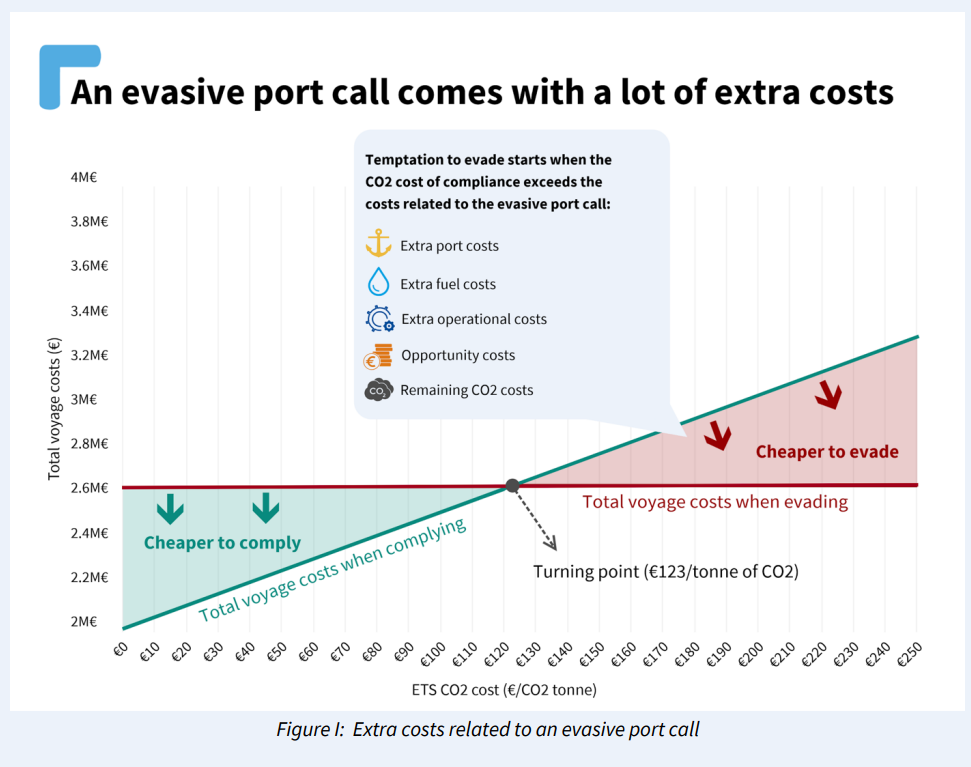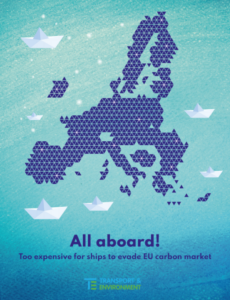Α newly launched study focuses on the future maritime ETS, and performs a cost-benefit analysis for an evasive port call and assesses the drivers in the cost structure that determine the cost-effectiveness of evasion from the shipowner’s perspective.
Namely, the shipping industry is the only means of transport not yet subject to GHG reduction targets or measures in the EU. This is despite EU related CO2 emissions from maritime transport being comparable to the emissions of Belgium and representing 13% of total EU transport emissions.
In 2019, the European Commission committed in its European Green Deal to extend the European emissions trading system (ETS) to the maritime sector. Several actors have since raised concerns that the inclusion of maritime transport in the EU ETS would lead to policy evasion, i.e. ships making an evasive port call outside the EU/EEA before sailing to European ports.
This would reduce the scope of emissions covered by the EU ETS, hence diminishing its practical effectiveness.

Also, the industry has warned that operators would make evasive port calls in neighbouring non-EU countries to avoid buying pollution permits for the whole voyage. But, at most, 7% of ships calling at EU ports would benefit from avoidance at today’s carbon price, according to an analysis by Transport & Environment (T&E).
Sofie Defour, shipping officer at T&E, stated that
The study demonstrates that horror stories of massive carbon leakage if ships were included in a carbon market are false. The EU has little to fear from shipowners evading its ports to make non-existent savings. It’s high time it made the sector start paying for its pollution.
Therefore, the analysis notes that an evasive port call comes with a lot of new additional costs, including extra fuel, operational, port-call, and opportunity costs. In order for it to be in a ship’s financial interest to avoid the ETS, the compliance cost (determined by the CO2 price) would need to be higher than the sum of all these extra costs. By simulating the impact of different ETS price levels on individual voyage costs to be covered by the future ETS, this report aims to identify ‘turning points’, i.e. the ETS CO2 price levels at which evasion becomes more profitable than compliance.
To learn more, click on the study herebelow































































